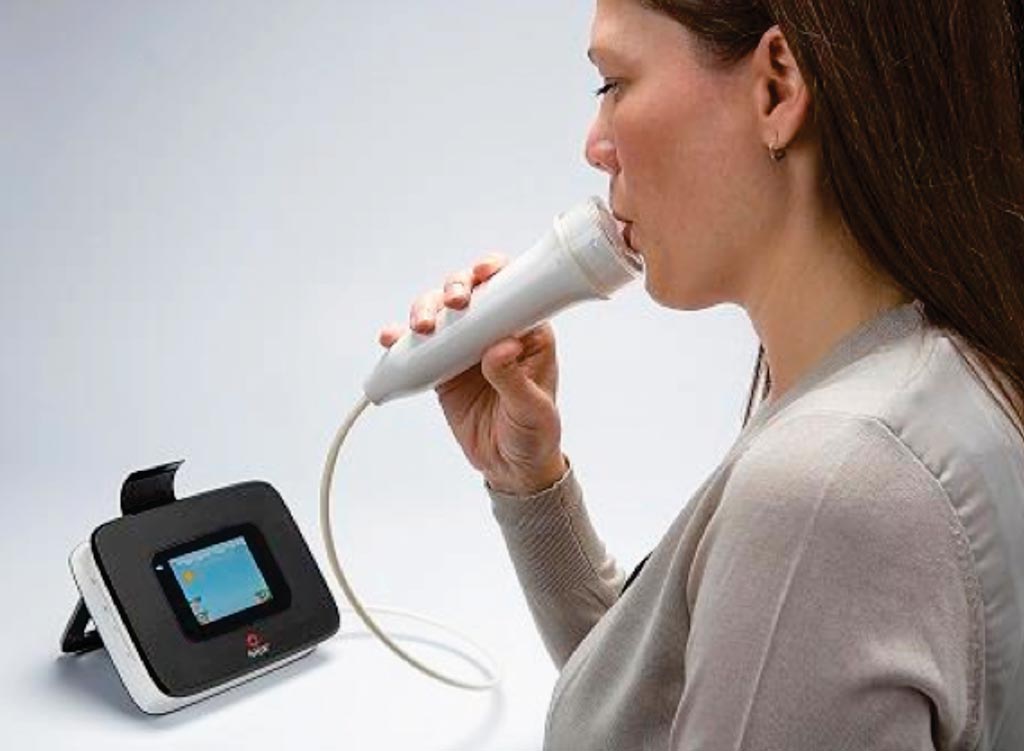Exhaled Nitrous Oxide Adjunct Test Diagnoses Asthma
By LabMedica International staff writers
Posted on 04 Jan 2018
Although about 24 million Americans are diagnosed with asthma every year, there is no single test that can diagnose the disease and common symptoms, such as shortness of breath, wheezing, and cough, are relatively nonspecific.Posted on 04 Jan 2018
Various tests, including bronchodilator response and positive results on bronchial challenge, may be used by clinicians to aid in the diagnosis of asthma in the appropriate clinical context, but no single criterion standard diagnostic test exists. More recently, fractional exhaled nitric oxide (FeNO) concentration has been added to the list of tests that clinicians may use to diagnose asthma.

Image: The fractional exhaled nitric oxide (FeNO) concentration test is a quick and simple test and a valuable tool to assist in the diagnosis of asthma (Photo courtesy of Talkhealth Partnership).
A team of scientists from the Mayo Clinic (Rochester, MN, USA) conducted a comprehensive literature search of six databases. The search included randomized clinical trials and observational studies that (1) enrolled patients aged five years and older with suspected asthma, (2) compared FeNO testing (diagnostic test) to standard diagnostic testing of asthma by health care professionals based on history, clinical course, or other diagnostic tests (clinical diagnosis, bronchodilator response, and positive results on bronchial challenge) (reference test), and (3) reported FeNO diagnostic accuracy.
The team included 43 studies with a total of 13,747 patients. In adults, using FeNO cutoffs of less than 20, 20 to 29, 30 to 39, and 40 or more parts per billion (ppb), FeNO testing had sensitivities of 0.80, 0.69, 0.53, and 0.41, respectively, and specificities of 0.64, 0.78, 0.85, and 0.93, respectively. In children, using FeNO cutoffs of less than 20 and 20 to 29 ppb, FeNO testing had sensitivities of 0.78 and 0.61, respectively, and specificities of 0.79 and 0.89, respectively. Depending on the FeNO cutoff, the posttest odds of having asthma with a positive FeNO test result increased by 2.80-fold to 7.00-fold. Diagnostic accuracy was modestly better in corticosteroid-naive asthmatics, children, and nonsmokers than in the overall population.
M. Hassan Murad, MD, MPH, the lead investigator of the study, said, “Asthma can sometimes be difficult to diagnose, and FeNO can be helpful to make therapeutic decisions more evidence based. In addition to a patient's history, the initial test is usually spirometry with an assessment of bronchodilator response. If this test does not confirm the diagnosis, but the index of suspicion for asthma is still high, measurement of FeNO may be helpful to rule in disease; although will still miss some patients with asthma.” The study was published on December 20, 2017, in the journal Mayo Clinic Proceedings.
Related Links:
Mayo Clinic













